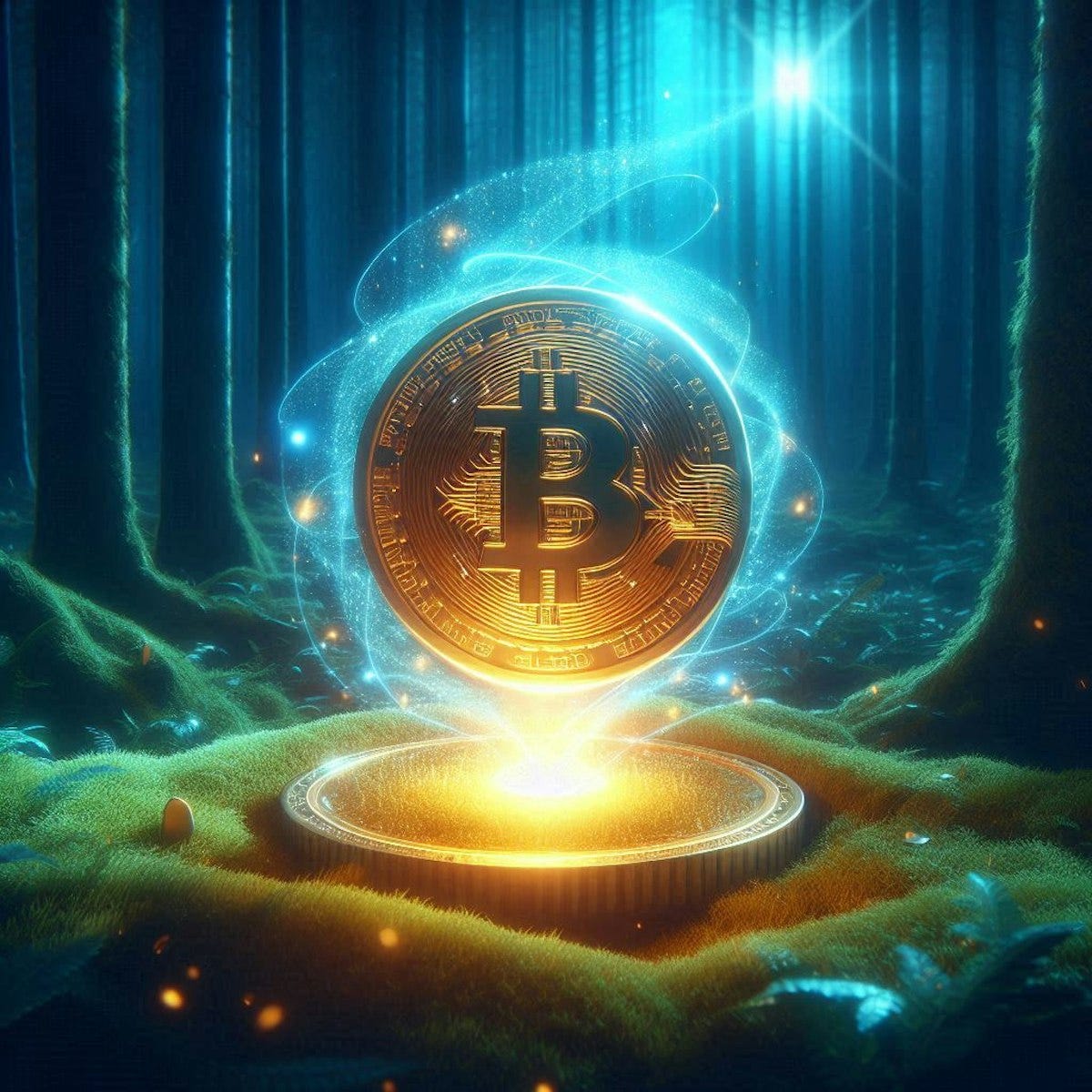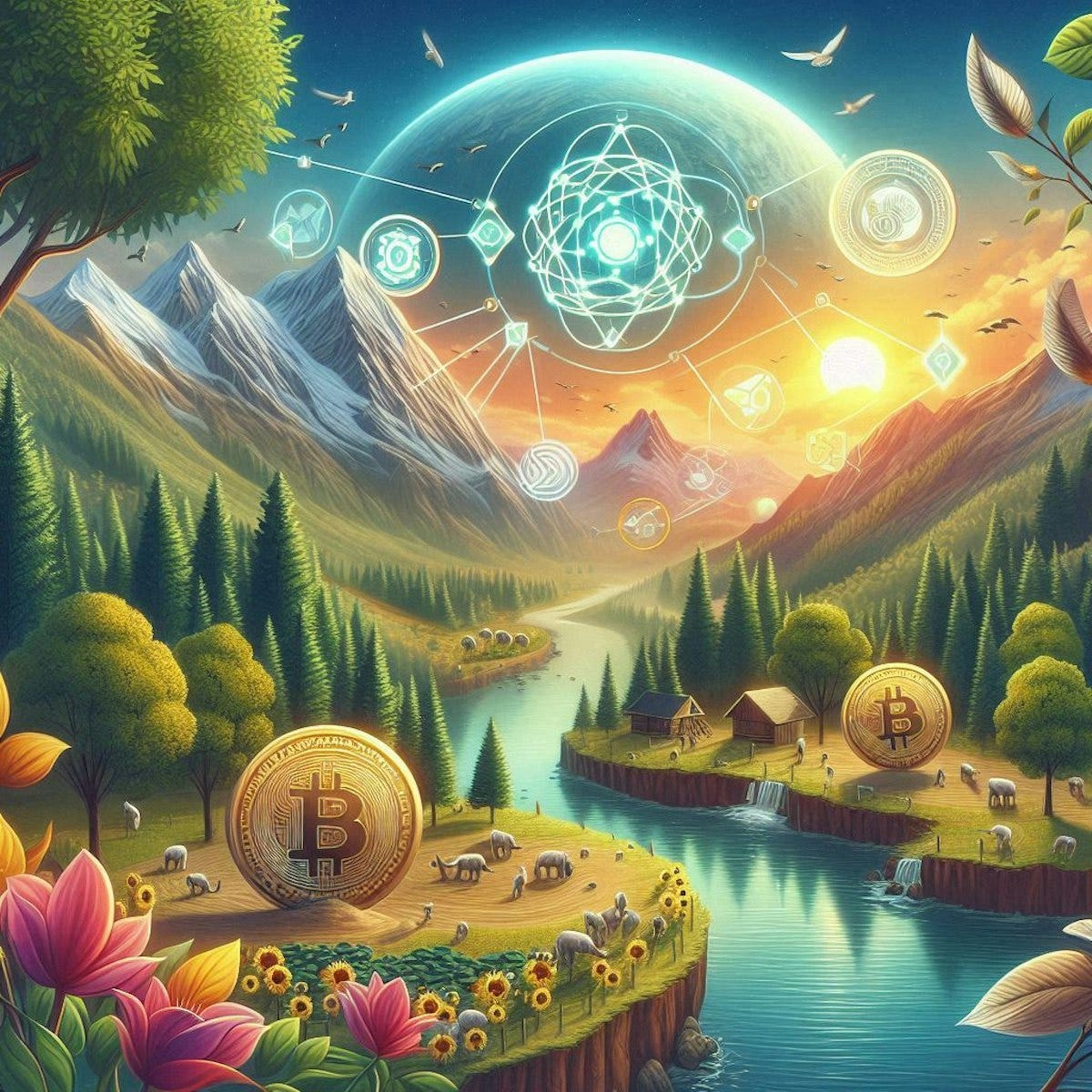How Blockchain and Smart Contracts Revolutionize Content Monetization for Intellectual Property
Blockchain is the answer to the Intellectual Property Issue.
Table of contents
- Rethinking and Rebranding NFTs When Used with Actual Digital Assets
- The Establishment of a Digital Asset Market of Intellectual Property
- The Magic of Tokenization -A Multi-Billion Dollar Market in the Making
- The Advantages of Smart Contracts Used With Tokenization and NFTs
- Compelling Use Cases For Each Digital Asset - Just Scratching the Surface
- Putting It All Together
- Dangers of a Tokenized Economy Ecosystem
- Blockchain - The Digital Enabler for Third-World Countries
First published at:
https://hackernoon.com/how-blockchain-and-smart-contracts-revolutionize-content-monetization-for-intellectual-property
on October 1st, 2024.

Rethinking and Rebranding NFTs When Used with Actual Digital Assets
NFTs (Non-Fungible Tokens) have earned a rather bad reputation for themselves.
When one thinks of NFTs, you automatically think of cases like Jack Dorsey’s first tweet, which was sold for 2.9 million USD in 2021 and then later revalued at 280 dollars recently - a 99% loss.
Scams and frauds have been rampant.
Following a peak in early 2022, the NFT market has seen a dramatic decline in interest and value, with many NFTs now considered virtually worthless.
Reports indicate that many individuals have lost substantial amounts—some up to $5 million—due to the drastic drop in NFT values across various collections.
NFTs are considered untouchable in today’s market.
This article aims to look beyond NFTs’ current state and understand the power of blockchain when applied to intellectual property and microtransactions.
For example, this volatile behavior of NFTs has occurred because of the launching of crypto altcoins in questionable ICOs and tokenizing items that have no intrinsic value - and, of course, scams and frauds galore.
How would markets react if there were:
No token launch
Limited cryptocurrency involvement
Assets of actual value
A stable valuation
Almost no volatility?
The Establishment of a Digital Asset Market of Intellectual Property
Right now, intellectual property can be monetized, but it is only a shadow of what is possible.
Microtransactions have the potential to change the profits of content creation forever!
To bring power to the creators, all digital content/assets, which include (but are not limited to:
Articles/Blogs
Research Papers/White Papers
Audio Content
Podcasts
Books/eBooks
Videos/Recordings
Movies
Music/Recordings
Social Media (All types - Text, Audio, Video)
VR/AR Content
Artwork (Digital and Real-World)
Software
Research Patents
Open Source Contributions
Open Source Projects
and the list goes on…
…
It can be tokenized and placed onto the blockchain and monetized/licensed/distributed/subsidized according to smart contracts employed by the blockchain platform as specified by the creator.
In this ecosystem, the creator truly owns his/her product.
The platform does not.
But can the platform gain monetization from monetizing the creators’ content?
Definitely.
How do we monetize all this intellectual property?
Tokenization, Microtransactions, and Smart Contracts (backed by a blockchain system)!

Disregard the Bitcoin logo. Crypto is secondary.
The Magic of Tokenization -A Multi-Billion Dollar Market in the Making
Tokenization on blockchains is the process of converting ownership rights of assets (digital/real-world) into digital tokens - digital representations of that asset.
These tokens are stored on a blockchain, providing a secure and transparent record of ownership, because the blockchain is immutable - data cannot be changed once added to the blockchain.
This allows assets to be easily traded, divided, and verified without intermediary platforms - no single platform will be exploiting creators for access to a wide audience - for example, YouTube.
This means that creators who have a wide following will be able to migrate that following from social platforms to independent decentralized dApps (decentralized Apps) that work on decentralized platforms that offer direct contact with consumers.
I believe that that will be the creator economy of the future - that with sufficient support, platforms will connect creators to consumers directly.
Existing platforms should ideally adopt that approach to bring greater monetization to their subscribers - and themselves.
X (Twitter), HackerNoon, Substack, TikTok, YouTube, Soundcloud, Meta (Facebook), Medium, Amazon, Spotify, Netflix - all of these companies and many more are sitting on multi-billion dollar opportunities to embrace blockchain, tokenization, Web3, use only well-establish cryptocurrencies, and utilize DeFi technology to bring huge returns to themselves and their users - but no ICOs, please.
Use only well-established crypto if you want to make sure volatility is not a problem!
And make sure that fiat money in all currencies is always viable.
Essentially, tokenization makes it possible to represent anything of value as a digital asset, enhancing liquidity and accessibility for creators, users, investors, fans, consumers, and the platforms themselves.
Establishing assets as NFTs on blockchain and distributing them worldwide is a game-changer for creators, consumers, and platforms alike.
The platform could take a 10% cut on all transactions conducted on its system - leading to incredible monetization and profit.
Agreed, 10% is rather high, but the first movers in this industry could have the advantage of charging higher transaction fees.
And even a platform as open as Substack takes a 10% cut of all sales!

The possiblities are endless!
The Advantages of Smart Contracts Used With Tokenization and NFTs
When digital assets are tokenized, and the only access to them is via the blockchain platform, there are many immediate consequences.
Issues that have plagued digital assets since the creation of the Internet can be eliminated forever!
Smart contracts, when used judiciously, immediately establish the following advantages:
1. Establish Copyright and Eliminate Piracy:
Switching all piracy-prone assets to NFTs could make piracy disappear overnight.
Control would come back to creators instead of platforms.
Piracy would have to be manually performed because distribution could only happen digitally.
2. Add Multiple Direct Revenue Streams:
Creators can sell their work directly to consumers without intermediaries.
This allows for fine-grained control over pricing and increased revenue.
Revenue would increase because nothing would have to be paid to publishing platforms.
3. Using Smart Contracts for Royalties:
The magic behind the revenue is smart contracts.
They can automate royalty payments to creators every time their asset is used.
This ensures they continuously benefit from their creations.
4. Generate Analytics and Engagement Tracking:
Tracking data could allow creators to see how their assets are selling and being used.
This could allow them to customize their offerings further.
It would also act as a viable option to plan future asset creation.

The Rise of Digital Assets enables a New World.
Compelling Use Cases For Each Digital Asset - Just Scratching the Surface
Putting digital assets on a blockchain and tokenizing them and thus controlling access could be the next best thing to sliced bread.
There are incredible use cases for every type of digital asset.
There are even more use cases for real-world assets, but that’s a topic for another article!
1. Text
Dynamic Licensing for E-books:
Authors can tokenize their e-books, allowing readers to purchase licenses that grant access for a specific period.
This model can reduce piracy by requiring users to renew licenses periodically, ensuring that authors receive ongoing revenue.
Payment happens directly to the author - not to the publishing platform.
Collaborative Research Platforms:
Researchers can tokenize academic papers, enabling collaborative access.
For example, institutions could pay for tokens that grant multiple users access to the same paper.
This approach not only enhances monetization but also limits unauthorized sharing.
2. Audio
Pay-Per-Listen Music Streaming:
Musicians can tokenize their tracks, allowing listeners to buy tokens for individual plays.
This model ensures artists are compensated for each listen.
That removes the likelihood of piracy through traditional streaming methods.
Exclusive Audio Experiences:
Creators can offer tokenized audio experiences such as guided meditations or exclusive interviews.
Tokens could serve as tickets for access.
This method provides a direct revenue stream while controlling distribution.
3. Books
(It overlaps with text, but there are substantially different use cases for each)
Subscription-Based Access:
Authors can create a tokenized subscription model for their works.
Readers can purchase tokens that provide access to a library of books.
This model encourages ongoing engagement and reduces the risk of piracy by controlling access.
Interactive Learning Modules:
Educators can tokenize educational books and materials.
Thereby allowing students to purchase tokens that unlock interactive features or supplementary content.
This enhances the learning experience while providing additional revenue streams.
4. Music
(overlaps with audio, but use cases can be wildly different)
Tokenized Fan Clubs:
Artists can create token-based fan clubs.
Members purchase tokens for exclusive content, early ticket sales, and behind-the-scenes access.
This model fosters community engagement while providing consistent income.
Crowdsourced Music Projects:
Musicians can tokenize upcoming albums.
Allow fans to buy tokens that fund production costs in exchange for exclusive previews or participation in the creative process.
This approach democratizes music production and enhances fan loyalty.
5. Videos
Tokenized Video Courses:
Creators can tokenize educational video content, allowing users to purchase tokens for access to specific courses or series.
This model ensures creators are compensated directly while limiting unauthorized sharing.
In this picture, and indeed, in all these achievable situations, the creator is king.
Premium Live Streams:
Filmmakers and content creators can offer live events as tokenized experiences.
Viewers can purchase tokens for access to exclusive screenings or Q&A sessions.
This method enhances monetization and controls viewer access.
6. Movies
(Overlaps with video, but again, different use cases)
Fractional Ownership of Films:
Independent filmmakers can tokenize their movies, allowing investors to buy fractional ownership in a film's revenues.
This model opens up funding opportunities while ensuring transparency in profit distribution.
This removes the need for huge initial investment while offering potentially huge revenue to investors.
Interactive Movie Experiences:
Filmmakers can create token-based interactive films where viewers purchase tokens to unlock additional content.
This approach enhances viewer engagement and creates new monetization avenues.
Fans could even participate in directing the outcomes of the movie's storylines!
7. Social Media Content
(overlaps almost all categories, but every platform can monetize in different ways)
Tokenized Content Monetization:
Influencers can tokenize their posts, allowing followers to purchase access to premium content or exclusive interactions.
This model provides a direct revenue stream while controlling unauthorized use.
You could be paid by simply hitting publish and having users access your media.
Engagement-Based Rewards:
Social media platforms can implement token systems where users earn tokens based on engagement metrics like likes or shares.
These tokens could be redeemed for premium features or content, incentivizing user participation.
This model also creates a huge number of monetization opportunities.
There are many more use cases to write, but now I need to limit myself for brevity.

The mark of a good entrepreneur is to know when to stand out!
Putting It All Together
This could herald the beginning of a golden age for blockchain.
The possibilities and the ramifications of tokenizing digital assets are endless.
While the implications all seem almost too good to be true -
There are downsides to this model if not managed carefully.
Blockchain is a tool that can bridge the digital divide.
It can help people receive payment worldwide, and that too, with partners like PayPal in their native currency.
Avoid Stripe - it has increased the number of countries it supports but it is not a worldwide option - not even in India, where it has suspended new accounts.
But we need entrepreneurs to head the charge in third-world and backward countries.
Once that happens, the entire world will change.
However, we should also examine the possible dangers of such a scenario.
Let’s take a closer look.
Dangers of a Tokenized Economy Ecosystem
Power, indeed, being given to the creators is a good thing.
Unfortunately, there is also a question of too much power.
Here are some of the issues in a blockchain-based system that could arise without careful regulation.
Concentration of Power:
Creators may monopolize their content, leading to unequal access and control over digital assets.
This will literally make the rich super-rich and lead to even greater inequality.
We need regulatory control over pricing.
Regulatory Challenges:
The lack of clear regulations can result in exploitation, fraud, and market manipulation.
Without adequate oversight, bad actors can game the system to further their pockets.
There must be limits on the pricing of microtransactions, the digital divide becomes even more pronounced.
Intellectual Property Issues:
Tokenization could complicate copyright laws.
This makes it harder to protect original works.
There must be careful verification performed before allowing tokenization.
Users must be penalized severely if they tokenize content they do not own.
Market Volatility:
Tokenized assets may experience extreme price fluctuations.
This leads to a risk of financial stability for investors.
This is especially true when assets are valued in crypto.
Highly volatile crypto should be discouraged, and incentives should be provided for dealing in fiat currency.
Security Risks:
Increased hacking incidents targeting tokenized assets could lead to significant financial losses.
It could also undermine trust in the system.
Hackers can get into any system worldwide, so all possible security mechanisms have to be in place.
A highly realistic solution is monetizing white-hat hacking and offering juicy bug bounties.
Privacy Concerns:
The transparency of blockchain could inadvertently expose personal data linked to tokenized assets, raising privacy issues.
We need to know what to record and what not to record - and also to use encryption wisely.
Blockchain without proper standards for encryption is a huge security risk.
Dependency on Technology:
Society may become overly reliant on blockchain technology
This makes platforms and even society itself vulnerable to technical failures or cyberattacks.
There must be a backup blockchain system in place.
This will be expensive, but it removes the risk of platform failure if the public blockchain system goes down because of hackers.

The entire world could become beautiful - or become much worse. The power lies with the users in this system.
Blockchain - The Digital Enabler for Third-World Countries
If this system is built with third-world countries in mind, there could be radical societal change.
It is true that if improperly used, wealth could become concentrated among the digital elites.
However, it is also true that third-world entrepreneurs could change the creator ecosystem in their country for the better.
But who is that selfless and averse to profits in the millions? Or even billions?
Sam Altman started OpenAI as a non-profit.
Now, many key leaders have left, and Altman (who was already a very rich man) might gain billions in equity from the for-profit listing of OpenAI (something that he denies, however).
His idea of Universal Basic Income seems to have been shelved.
Although UBI is undoubtedly the need of the hour!
People need to start their own companies in every third-world country and monetize it with smart contracts and blockchain.
And established platforms need to use blockchain to monetize the digital assets they already have.
Articles, music, videos, reels, shorts, recordings, blogs, stories, long-form deep dives, movies, concerts - all these and many more are digital assets.
Of course, microtransactions are called micro for a reason - they should be very small amounts that everyone can afford.
But with even a 10% cut of all microtransactions, the platforms stand to earn billions!
Microtransactions will change content creation forever,
Do you want to surf that wave and make multimillion-dollar profits?
Or stand on the sidelines and watch others do it instead of you?
The choice is yours.

Automation is the future. Smart Contracts and Microtransactions automate Monetization. As simple as that.
All images were created by Microsoft Designer with enhanced Prompts.

